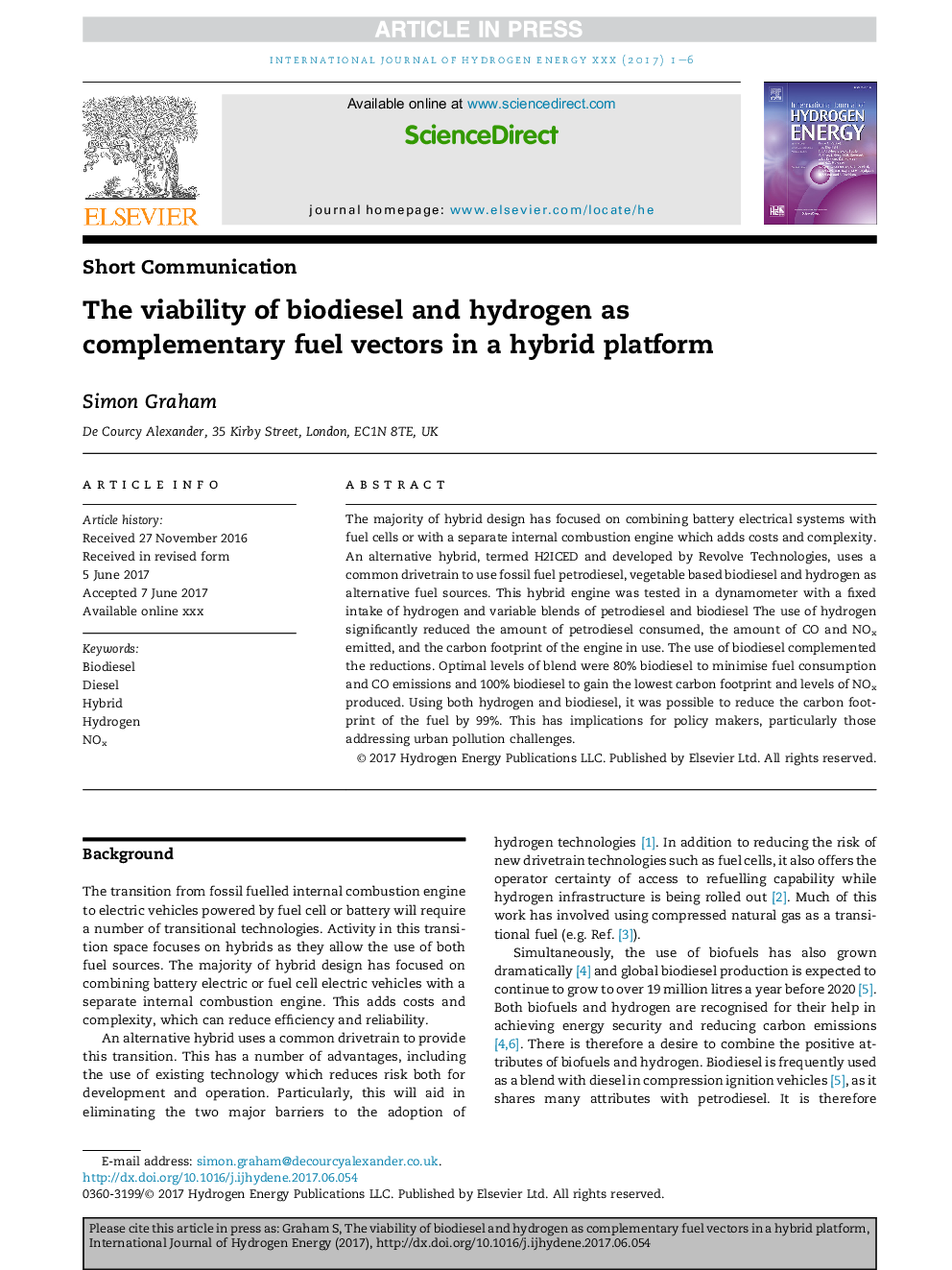| Article ID | Journal | Published Year | Pages | File Type |
|---|---|---|---|---|
| 5147060 | International Journal of Hydrogen Energy | 2017 | 6 Pages |
Abstract
The majority of hybrid design has focused on combining battery electrical systems with fuel cells or with a separate internal combustion engine which adds costs and complexity. An alternative hybrid, termed H2ICED and developed by Revolve Technologies, uses a common drivetrain to use fossil fuel petrodiesel, vegetable based biodiesel and hydrogen as alternative fuel sources. This hybrid engine was tested in a dynamometer with a fixed intake of hydrogen and variable blends of petrodiesel and biodiesel The use of hydrogen significantly reduced the amount of petrodiesel consumed, the amount of CO and NOx emitted, and the carbon footprint of the engine in use. The use of biodiesel complemented the reductions. Optimal levels of blend were 80% biodiesel to minimise fuel consumption and CO emissions and 100% biodiesel to gain the lowest carbon footprint and levels of NOx produced. Using both hydrogen and biodiesel, it was possible to reduce the carbon footprint of the fuel by 99%. This has implications for policy makers, particularly those addressing urban pollution challenges.
Related Topics
Physical Sciences and Engineering
Chemistry
Electrochemistry
Authors
Simon Graham,
